It Took Forever, but Ukraine Is Finally Building Its Own Howitzers
As Russian tanks poured into Ukraine in February 2022, the engineers at the Kramatorsk Heavy Duty Machine Tooling Plant were preparing to destroy what they’d spent the last seven years building: the only prototype 2S22 Bohdana long-range truck howitzer, Ukraine’s first artillery system developed to use Western-caliber 155-millimeter rounds.
Better to destroy it, they reasoned, than let it fall into the hands of invading Russian troops.
But just a few months later, the 28-ton prototype showed up hundreds of miles away on the opposite side of Ukraine, helping to deliver the killing blow in Ukraine’s siege of the Russian garrison on Snake Island.
Now, videos show that Ukraine had assembled two more Bohdanas now seeing combat in the massive see-saw battle for control of Bakhmut.
— OSINTtechnical (@Osinttechnical) July 9, 2023
This suggests that Ukraine may genuinely have the capacity to begin production on the long-range guns despite the damage wrought by Russia’s invasion.
Ukraine’s Wheeled Artillery Future
Artillery played a dominant role in the intense battles that occurred during Russia’s initial 2014-2015 invasion of Ukraine. It became clear to Ukraine’s military that it would need more and better artillery in the event of a future conflict with Russia. Other critical needs included drones for artillery spotting, counterbattery radars to locate enemy artillery, and electronic warfare systems.
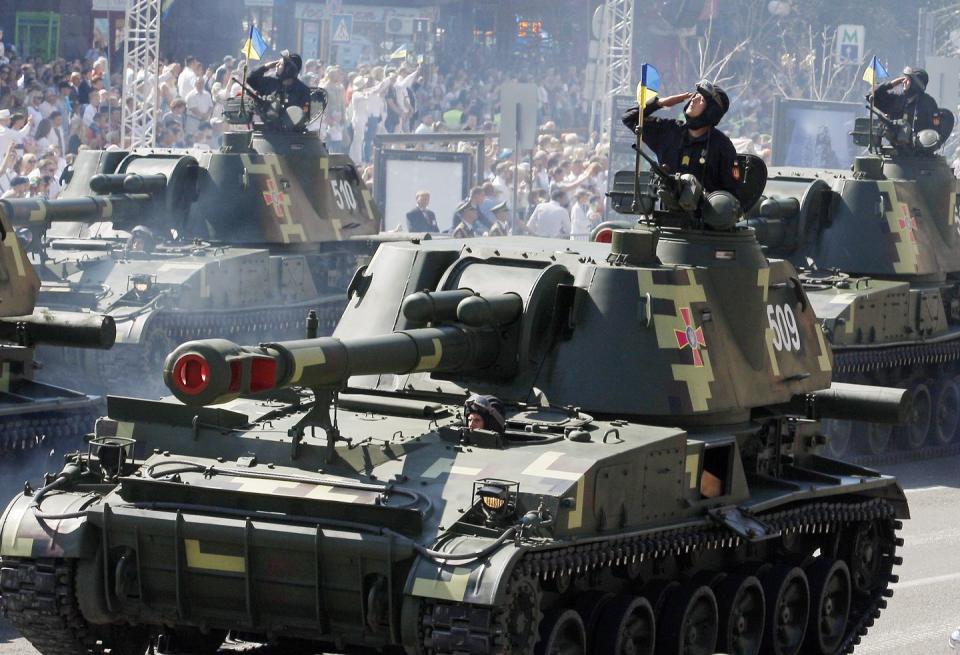
But Ukraine’s stock of Soviet 152-millimeter howitzer shells—and their capacity to build more—has fallen far short of what was needed. Furthermore, Ukraine has been in possession of comparatively small numbers of longer-distance self-propelled howitzers like the modern 2S19 Msta-S (around 35 pre-war) and the older 2S5 Gigantsit-S and 2S7 Pion (around 18 and 13 in pre-war service) that could strike regular enemy artillery from beyond easy retaliatory range and quickly reposition.
Inconveniently, the obvious place to get more 152-millimeter artillery and ammo was Russia—Ukraine’s primary security threat. As that was not an option, Ukraine needed to find more modern howitzers that could use NATO-standard 155-millimeter shells and could be sourced from more sympathetic countries.
Work on this Western-style howitzer began in 2016, drawing from a proposed truck-based design drafted back in 2009. Indigenous production of the gun’s high-strength rifled barrel posed significant challenges overcome by the purchases of new machine tools and use of a special alloy developed for the 120-millimeter Molot mortar built in Sumy.
The 2S22 was first paraded through Kyiv in 2018 with a non-functioning gun, only to be completed the following year. Seemingly inspired by France’s CAESAR artillery truck, it combined a long-range howitzer with a KrAZ-6322 six-wheel off-road truck manufactured by Ukraine’s Kremenchuk Automobile factory.
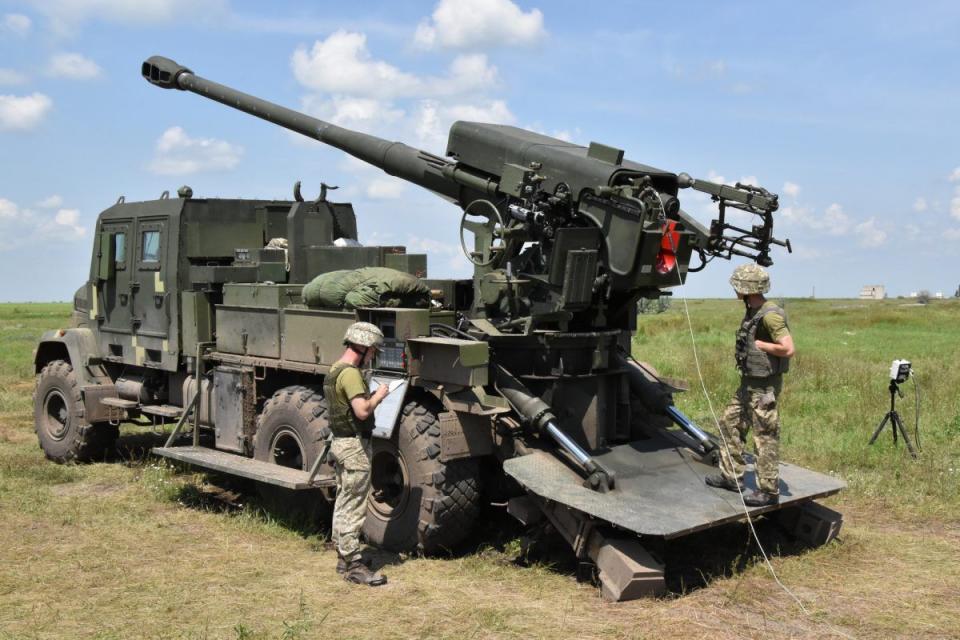
As for CAESAR, the gunnery crew had to dismount in order to load and fire the howitzer while standing on a ramp at the back of the vehicle. A maximum firing rate of 4-6 rounds per minute was possible, drawing from an onboard supply of 20 shells. The 2S22 could sustain road speeds of 50 miles per hour (or 18 mph off-road). The armored cab for the five crew protected against small arms, lower-energy artillery fragments, and mines smaller than 14 pounds.
The Bohdana’s paradigm departed from Ukraine’s Soviet legacy of tank-resembling self-propelled howitzers like the 2S1, 2S3 and 2S19, with tracks and turrets. These were intended to follow closely behind tanks and needed better armor and all-terrain mobility.
But new Western-style wheeled howitzers were built on the idea that modern, longer-range guns and shells could shoot from far behind the frontline, and thus could get by with using cheaper truck chassis staying closer to road networks. These relied on rapid shoot-and-scoot capability to dodge counterbattery fire.
However, progress on the 2S22 nearly froze in 2020 due to difficulties acquiring the necessary 155-millimeter shells (eventually obtained from Turkey and the Czech Republic), government-commercial disputes which flared into legal challenges and temporary cancelation of all funding, and the need to correct for excessive recoil by devising an improved muzzle break.
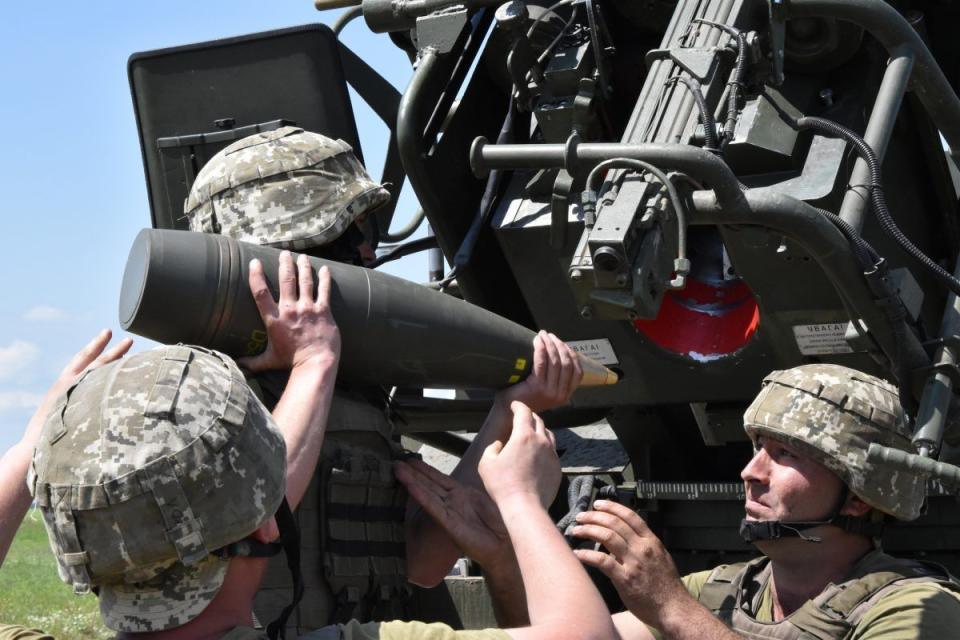
Finally, just a few months prior to Russia’s invasion, official firing trials were held, demonstrating a capacity to hit targets up to 26 miles away and exceeding expectations. (Theoretically, rocket-propelled shells may achieve ranges of 31 miles.) However, the Bohdana prototype still lacked the autoloader and digital fire control system that were hallmarks of other cutting-edge self-propelled howitzers.
Bohdana: The Howitzer That Lived
When Russia’s full-scale invasion began in February of 2022, Putin’s forces appeared poised to overrun Ukrainian defenses in Donetsk and capture Kramatorsk. The promising new weapon seemingly had arrived just too late to aid in Ukraine’s existential struggle, and thus was marked for scuttling.
But Ukrainian politician Sergey Pashynsky claimed in a Facebook post that he intervened to prevent this fate. Instead, the 2S22 was disassembled and its components trucked to relative safety in Zhitomyr in western Ukraine, where it was re-built. (Russia, meanwhile, never made it to Kramatorsk.)
The 2S22 reemerged in June, when a video showed that it was deployed near Ukraine’s border on the Black Sea with Romania on the Danube River—450 miles southwest of Kramatorsk.
#Ukraine: As Russians rapidly withdraw from the famous Snake Island, the Ukrainian army shows how they regularly targeted it- here we see a Ukrainian-developed Bohdana 155mm self-propelled howitzer destroying Russian positions on the island with fire correction from a TB2 drone. pic.twitter.com/oUq6AUSiQi
— 🇺🇦 Ukraine Weapons Tracker (@UAWeapons) June 30, 2022
The 2S22’s mission was sustained bombardment of the Russian garrison on Snake Island 20 miles way, which Russia’s Navy had captured on the war’s first day. By June, the Russian garrison had sustained devastating losses from Ukrainian Bayraktar drones and warplanes. Surveillance imagery provided by Bayraktars orbiting vulture-like around Snake Island allowed to the 2S22’s crew to correct for accuracy, allegedly even knocking out a Russian Pantsir air defense vehicle.
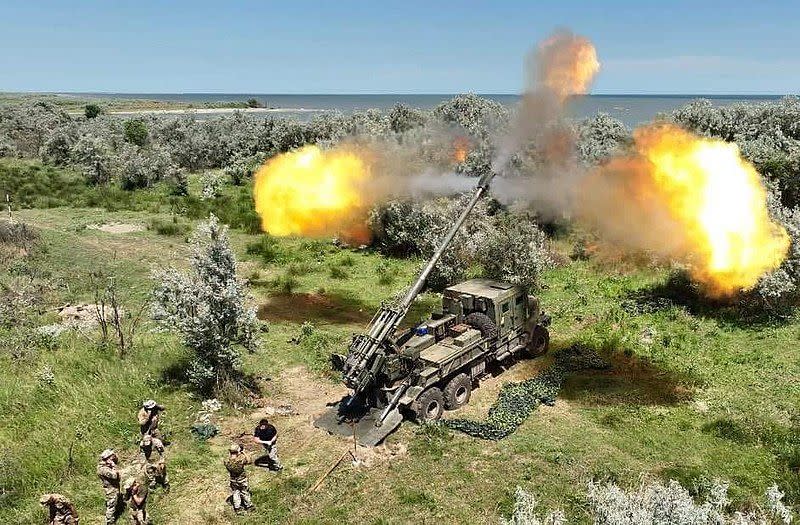
Ukraine’s ability to shell the virtually cover-less island round-the-clock from land seemingly proved the final straw. After days of continual bombardment, Russia evacuated the surviving troops, leaving behind the wreckage of numerous air defense vehicles, a helicopter, and a half-dozen lost boats and ships.
The original 2S22 (last seen in action December) remains in service with Ukraine’s 1st Special Forces Brigade. Meanwhile, the Kramatorsk factory has apparently assembled two more pre-production 2S22s based on the MAZ-6317 truck. Between 2016-2018, Ukraine purchased at least 320 MAZ-6317s from Belarus with Chinese engines swapped in for Russian ones.
A video published in July shows that these now serve in Ukraine’s 57th Motorized Brigade, a unit founded in 2014 from Kirovohrad’s Territorial Defense Force units. Since 2022, the lighter-weight 57th has seen action in Kherson and Bakhmut, and ordinarily incorporates only towed artillery in its force structure.
The Future Bohdana
Back in January of this year, Ukraine’s defense minister Oleksii Rezinkov announced that Ukraine had put up funding to begin serial production of the Bohdana. Declining to state how many were on order, Reznikov claimed that procurement for the “first divisions” was made, which—in Soviet-style nomenclature—may imply multiple battalion- or regimental-sized units.
However, it was difficult to assess how literally to take his statement, as Ukraine’s defense-industrial complex has reliably struggled to follow through on official proclamations, including similar ones made regarding Ukraine’s BM-Oplot ‘super’ tank both this years and in 2018.
But the fact that at least three Bohdanas are now operational suggests that the capacity to manufacture more actually exists, especially with the Kramatorsk plant now moved to western Ukraine.
That said, there’s a new factor consider: the production model Bohdana will likely involve yet another new chassis, as MAZs from Russia-aligned Belarus aren’t renewable—nor are KrAZ-6322s dependent on a Russian engine. At a defense expo in Abu Dhabi, Reznikov suggested the use of six-wheeled KraZ or German MAN trucks, or even an eight-wheeled variant based on the Czech Tatra T815. But such adaptations don’t always proceed as smoothly as expected.
Another question is whether or not Ukraine will attempt to finally fit production Bohdanas with an automatic loading and digital fire control systems as intended—accepting the attendant delays—or proceed without to field more artillery tubes sooner.
The Kramatorsk factory is also co-developing with Slovakia the latter’s new Eva 6x6 howitzer truck by state-owned Konstrukta Defense, which will also aid in finalizing the Bohdana’s design. EVA, too, has a range of 25 miles, but will also feature an MRSI mode allowing multiple rounds to hit a target simultaneously and require only three crew due to greater automation. Reportedly, Ukraine’s satisfaction with cooperation on the importing of the Slovakian Zuzana 2 howitzer underlays the new deal, though some media outlets warn of political risks depending on the results of Slovakian elections.
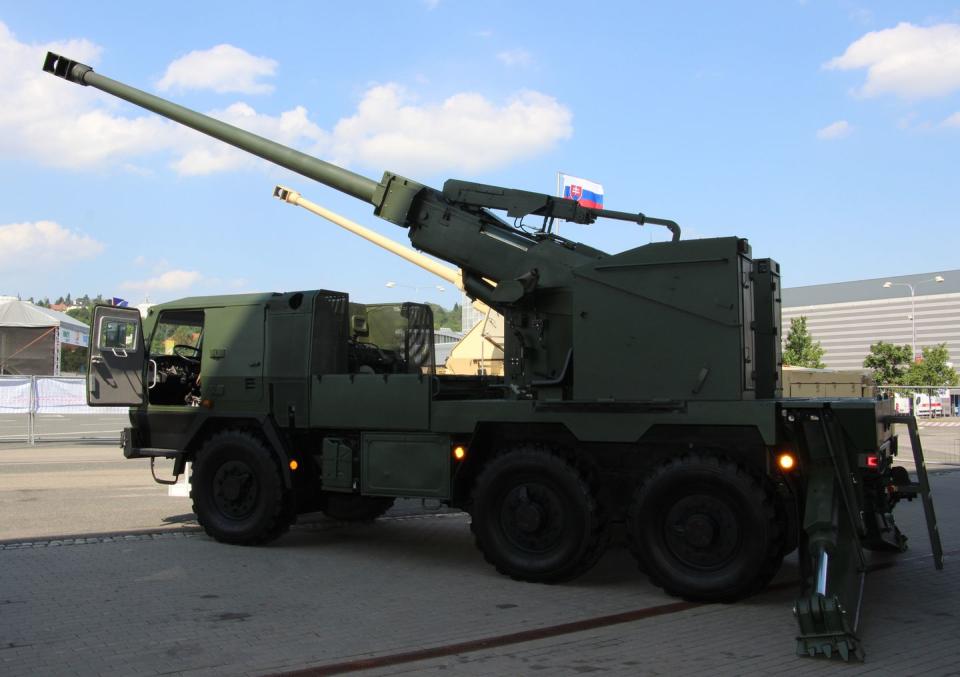
Like many Ukrainian armament programs, the Bohdana’s development was torturous and has yet to be finalized. But Mikhail Zhirokov—a chronicler of the Bohdana’s many ups and downs who is clear-eyed about the shortcomings of Ukraine’s defense industry, deems the current plans for mass production “very promising” in a recent article. He argues that Russia’s lack of agile truck-style artillery “narrows the possibilities of quickly changing positions, and therefore makes our counterbattery struggle more effective.”
In quality and transparent quantity, self-propelled artillery donated or purchased from abroad like the CAESAR, PzH 2000, Zuzana 2, and M109 will dominate in Ukraine’s military for the foreseeable future. But the capacity to indigenously produce long-range artillery compatible with NATO-standard 155-millimeter ammunition should boost Ukraine’s longer-term ability to sustainably defend itself against its bigger—but clumsier—invader.
You Might Also Like
